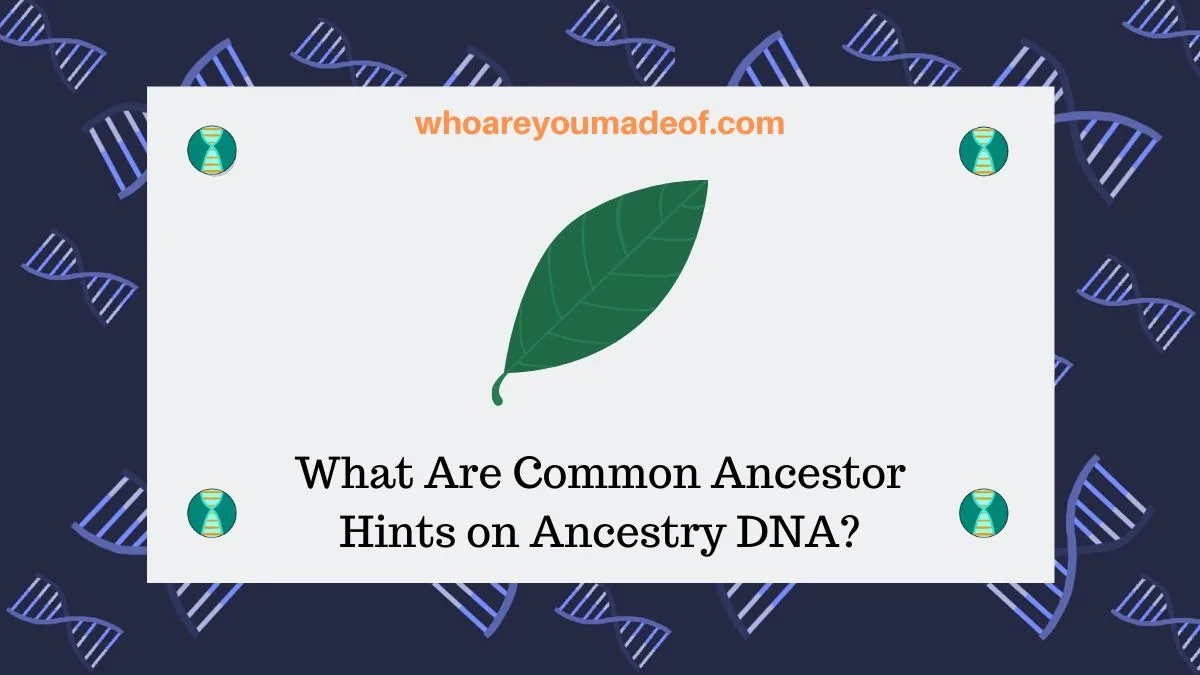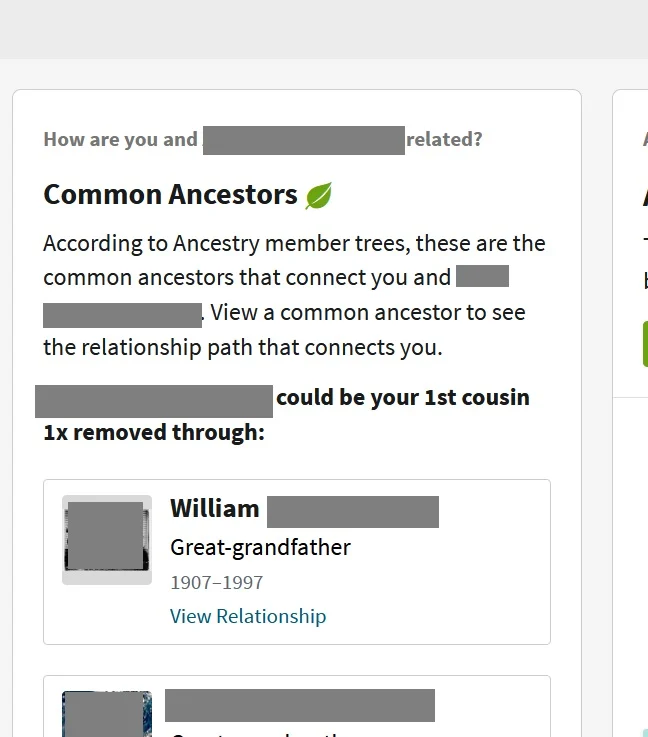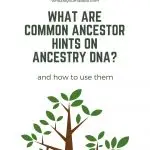Do you want to know what Common Ancestor Hints are on Ancestry DNA? In this post, I'll explain to you exactly what these hints are, how to access them, and more.
Common Ancestor Hints are a really fun and helpful way to explore your Ancestry DNA matches. This feature is a new and improved version of the no longer available "Shared Ancestor Hint" tool.

I have tens of thousands of Ancestry DNA matches, and I certainly welcome any method for sorting, filtering, and searching my matches to help me better understand how we might be connected.
What is a Common Ancestor hint?
A Common Ancestor Hint indicates that your DNA match has a direct ancestor that matches the name of one of your direct ancestors.
In other words, a Common Ancestor Hint means that the Ancestry software has identified a shared ancestor between you and the DNA match.
Along with the Common Ancestor Hint, you will see the estimated relationship between you and your DNA match. This estimation is based on the common ancestor in both of your trees.
For example, if you are the great-great-great grandchild of Maria Walker Habersham and she is in the family tree that you have made on Ancestry, and you have a DNA match who is also the 3rd great-grandchild of the same woman (and who also has put her in their Ancestry tree), you should find a Common Ancestor Hint connected to this DNA match.
The estimated relationship between you and your DNA match listed in the Common Ancestor Hint is different than the predicated relationship based on shared DNA.
How to find Common Ancestor Hints on Ancestry DNA matches
There are two ways to find Common Ancestor Hints. You can find them directly on your DNA match list, or on a specific DNA match's profile page.
For example, if you take a look at your DNA match list, you can find DNA matches who share Common Ancestor Hints with you by looking for a tree leaf and the words "Common Ancestor".
The image below shows an example of how it may look on your DNA match list:

If I click on the DNA match's name, I will be taken to the DNA match profile page. On this page, I will see more details about the Common Ancestor Hint.
The image below is an example of how a Common Ancestor Hint might look on a DNA match's profile page. This is from one of my DNA matches:

The great thing about the Common Ancestor Hint is that you will be able to see the names of the ancestors that you share in common even if you don't have an Ancestry subscription.
If you do have an Ancestry subscription and your DNA match has a public family tree, you can view their tree to browse their ancestors. This is the best way to determine the accuracy of the hint.
How to Filter Results to Only Show Matches with Common Ancestor Hint
I highly recommend going through all of your DNA matches who share a Common Ancestor Hint with you. Luckily, Ancestry makes this easy to do.
To filter your DNA match list to display only those DNA matches who share a Common Ancestor Hint, simply click the "Common Ancestors" button at the top of your DNA match list, as show in the image below:

If you filter your list to only show Common Ancestor Hints, you can reset your list to display all matches by pressing the button again. Then, you should see all of your matches displayed in the default manner.
What if you have no Common Ancestor Hints?
In order to have Common Ancestor Hints on your DNA results, you will need to have a family tree attached to your DNA results. For best results, your family tree should go back at least 4-6 generations on as many lines as possible.
By building your tree back 4-6 generations on all of your lines, you'll have the best chance of getting Common Ancestor Hints. This is because to determine this type of hint, Ancestry only compares the people who you have in your family tree to the ancestors in your DNA matches' trees.
Building your tree back as far as you can on all lines will help you get more hints, especially if most of your DNA matches are not very closely related to you.
DNA matches who do not have family trees attached to their DNA results will not show up with Common Ancestor Hints. This means that you will only see DNA matches who have family trees connected on your list of matches with this hint type.
Conclusion
I truly hope that this post has helped you understand more about your Ancestry DNA Common Ancestor Hints, and that it has re-ignited your excitement about your Ancestry DNA results.
There is truly something new to learn each day from our DNA!
If you have any questions about something that you read in this post, or if you would like to add your own positive experience with Common Ancestor Hints, I would love for you to join us in the discussion below.
Thanks for stopping by today.



Jim
Sunday 6th of August 2023
What do the letters and numbers behind the name Elizabeth Frances Elliott Sherman Peel "6c 4xre" mean? Eliza is my paternal grandmother.
Mercedes
Sunday 6th of August 2023
Hi Jim, This looks like a notation for "sixth cousins four times removed". People of this relationship are a different number of generations descended from the common ancestor. The cousin who is most closely descended from the common ancestor determines the type of cousin (in this case, 6th cousin) and then you calculate the number of additional generations to get to the other person to figure out how many times removed you are. I hope this helps! Sincerely, Mercedes
judy
Sunday 26th of July 2020
Thanks Mercedes. However, as I did my DNA through My Heritage, and Ancestry seems to block me, and, although, I do understand what your message told, it is no use to me.